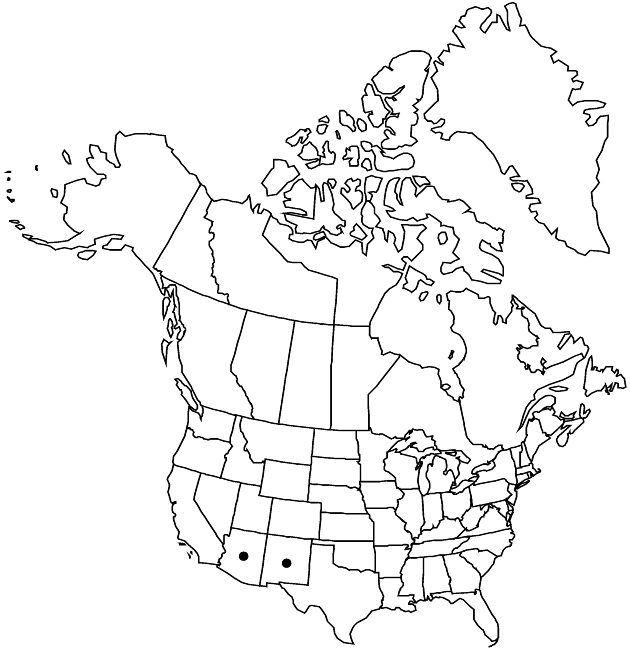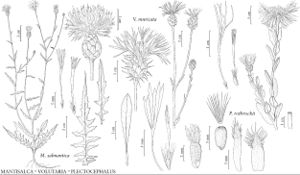Plectocephalus rothrockii
Bot. Mag. 13: 5. 1996.
Plants 30–150 cm. Stems usually 1, erect, sparingly branched, loosely tomentose, sometimes glabrate. Leaves loosely tomentose, soon glabrate; basal petiolate, usually absent at anthesis, smaller than cauline, blades oblanceolate, tapered to base, margins entire or denticulate; cauline sessile, often clasping, usually not much smaller except among heads, blades ovate to lanceolate or oblong, margins entire or serrulate to denticulate; distally reduced to bracts, sometimes appendaged like phyllaries. Involucres broadly hemispheric, 20–35 mm. Phyllaries: bodies stramineous to greenish, ovate (outer) to oblong (inner), appendages erect to spreading, ± brown, fringed with 15–25 slender, ciliate, spinelike teeth 2–4 mm; mid with (9–) 10–13 (–15) pairs of lobes; faces tomentose or glabrescent. Corollas of neutral florets pink to purple (rarely white), 30–70 mm, enlarged, raylike; of bisexual yellowish, 20–30 mm. Cypselae dark-brown, ca. 4 mm, glabrous; pappus bristles unequal, stiff, 5–6 mm.
Phenology: Flowering Jul–Nov.
Habitat: Damp soil near streams, roadsides, open pine-oak woodlands and forests
Elevation: 1300–2900 m
Distribution

Ariz., N.Mex., Mexico (Chihuahua), Mexico (Durango), Mexico (Sinaloa), Mexico (Sonora)
Discussion
Plectocephalus rothrockii closely resembles P. americanus. Although the ranges of the two taxa approach each other in southeastern Arizona and adjacent Chihuahua, they are locally allopatric, separated by habitat differences, and are not known to grow together. Plectocephalus americanus is a species of grassland habitats of the southern Great Plains; P. rothrockii is largely restricted to moister canyon sites in the Sierra Madre Occidental of Mexico and associated ranges of the American southwest. Mexican basketflower is sometimes cultivated, and can be expected to occur outside its native range.
Selected References
None.
Lower Taxa
"fine" is not a number.
